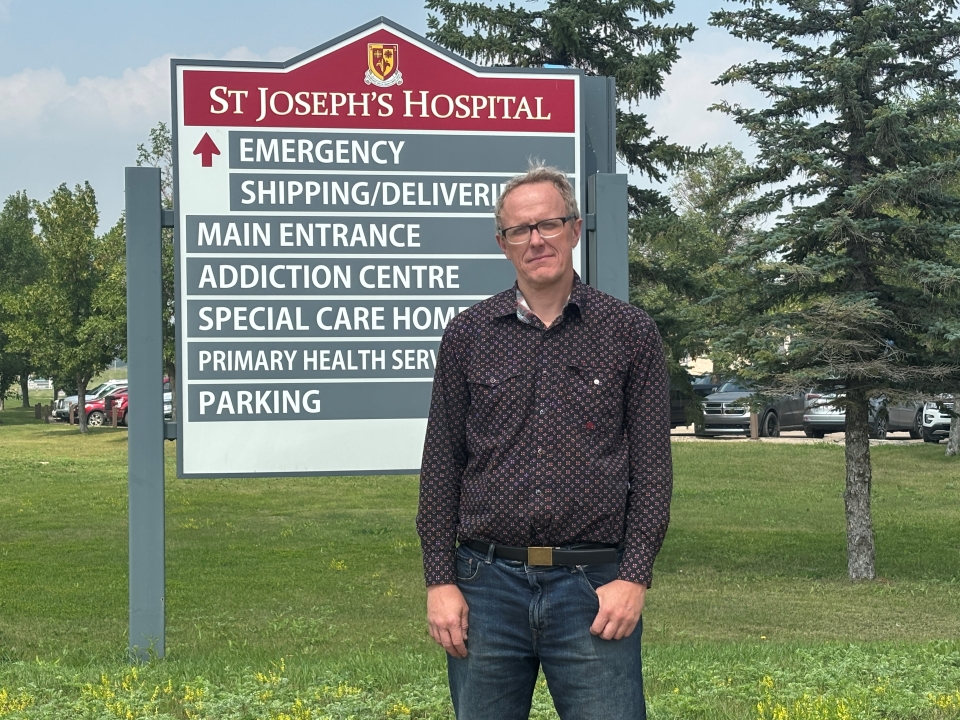The Saskatchewan NDP's “Critical Condition” tour made a stop in Estevan this week, where MLA Keith Jorgenson voiced strong concerns about the province’s reliance on virtual healthcare, and the government's failure to inform the public about when emergency rooms are being run remotely.
Jorgenson, the MLA for Saskatoon Churchill-Wildwood and the NDP’s associate shadow minister for health, stood outside St. Joseph’s Hospital and said he’s heard the same concern in community after community: patients are walking into hospitals without knowing whether they'll be treated by a real doctor or a video screen.
“We're not saying no to virtual care,” Jorgenson said. “We're just saying that it has a place, and people need to be informed of what that place is.”
The Virtual Physician Program (also known as Remote Presence Emergency Services) connects rural emergency departments to off-site doctors via telehealth tools like webcams and remote diagnostics. The government has credited the program with keeping dozens of ERs from fully closing, but Jorgenson said the lack of transparency is a danger in itself.
“Imagine me showing up at the hospital and seeing it closed, and a sign on the door, and then knowing my elected representative knew that hospital was closed and chose not to tell me,” he said. “How angry I would be. That’s the reality of where we’re at right now.”
Jorgenson pointed directly at Lori Carr, the province’s Minister of Rural and Remote Health and MLA for a riding that includes several affected hospitals.
“Why does Lori Carr not want people in her riding to know when their hospital is closed?” he asked. “It’s hard for me to understand why they kind of take people for granted in that manner.”
With the province often silent on when ERs are closed or operating under virtual care, Jorgenson says rural communities have been forced to take matters into their own hands. Some towns post updates on Facebook, use digital signage, or rely on local word-of-mouth, far from ideal, especially for seniors or those not online.
“That’s SHA’s job. That’s the government’s job. That’s Lori Carr’s job,” he said. “The government has a responsibility to do these things.”
He added that over the course of the tour, which has taken him through more than a dozen towns, he hasn’t spoken to a single resident or health worker who had been contacted by their MLA about service disruptions, something he sees as a failure of leadership.
“Better is possible,” Jorgenson emphasized. “We don't have to be satisfied with a system where your hospital is closed 50 times in a couple of months.”
While virtual care has its place in rural medicine, such as routine checkups or follow-ups, Jorgenson stressed it should never replace full-service emergency rooms without clear communication. And without efforts to improve doctor and nurse retention, better compensation, and local training, he warned that things will continue to worsen.
